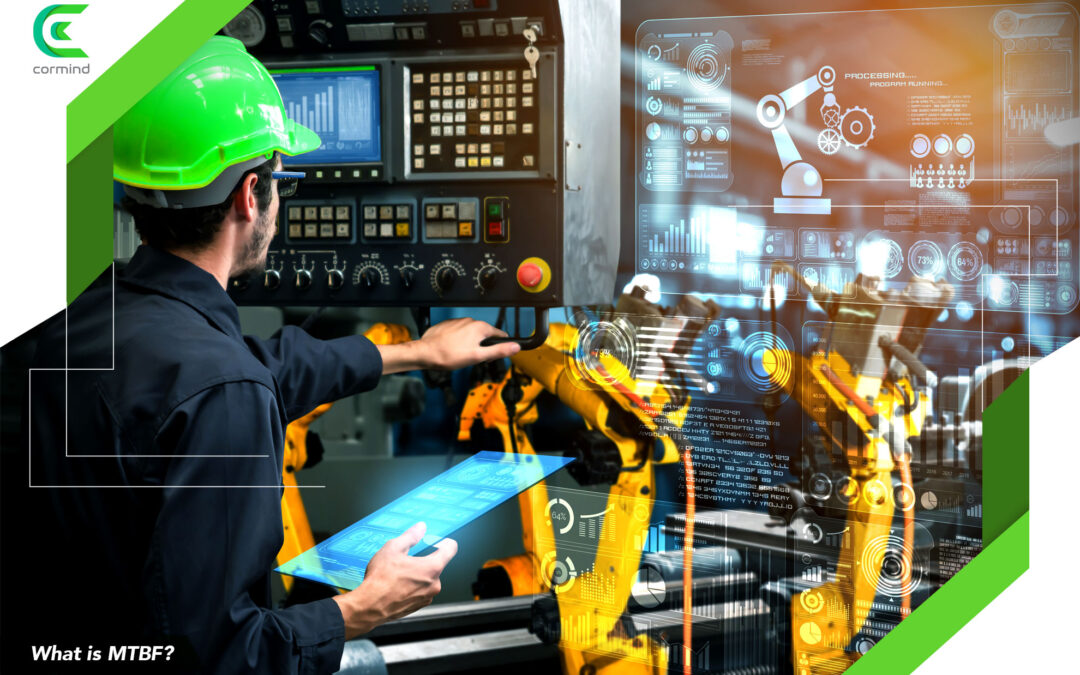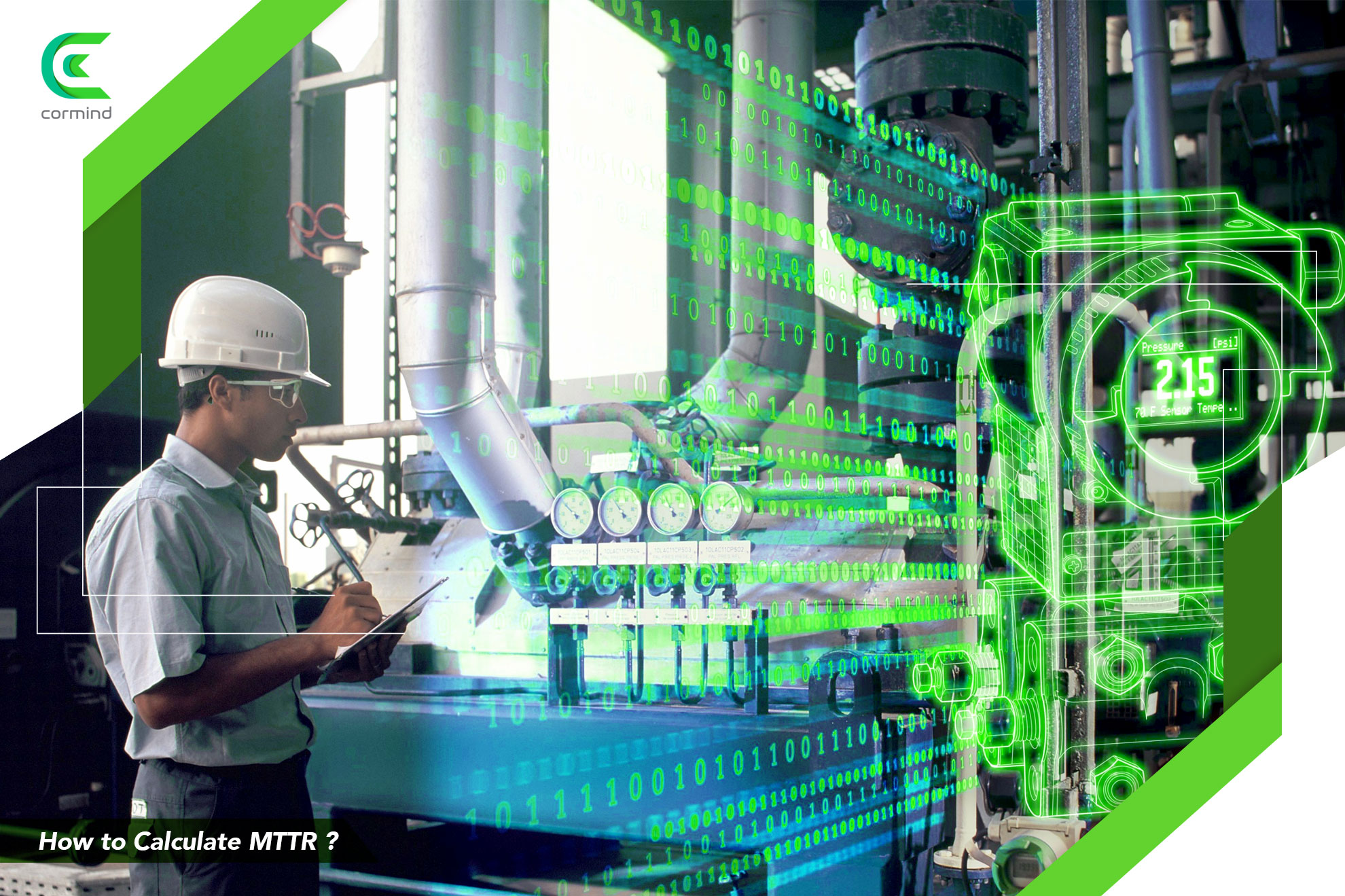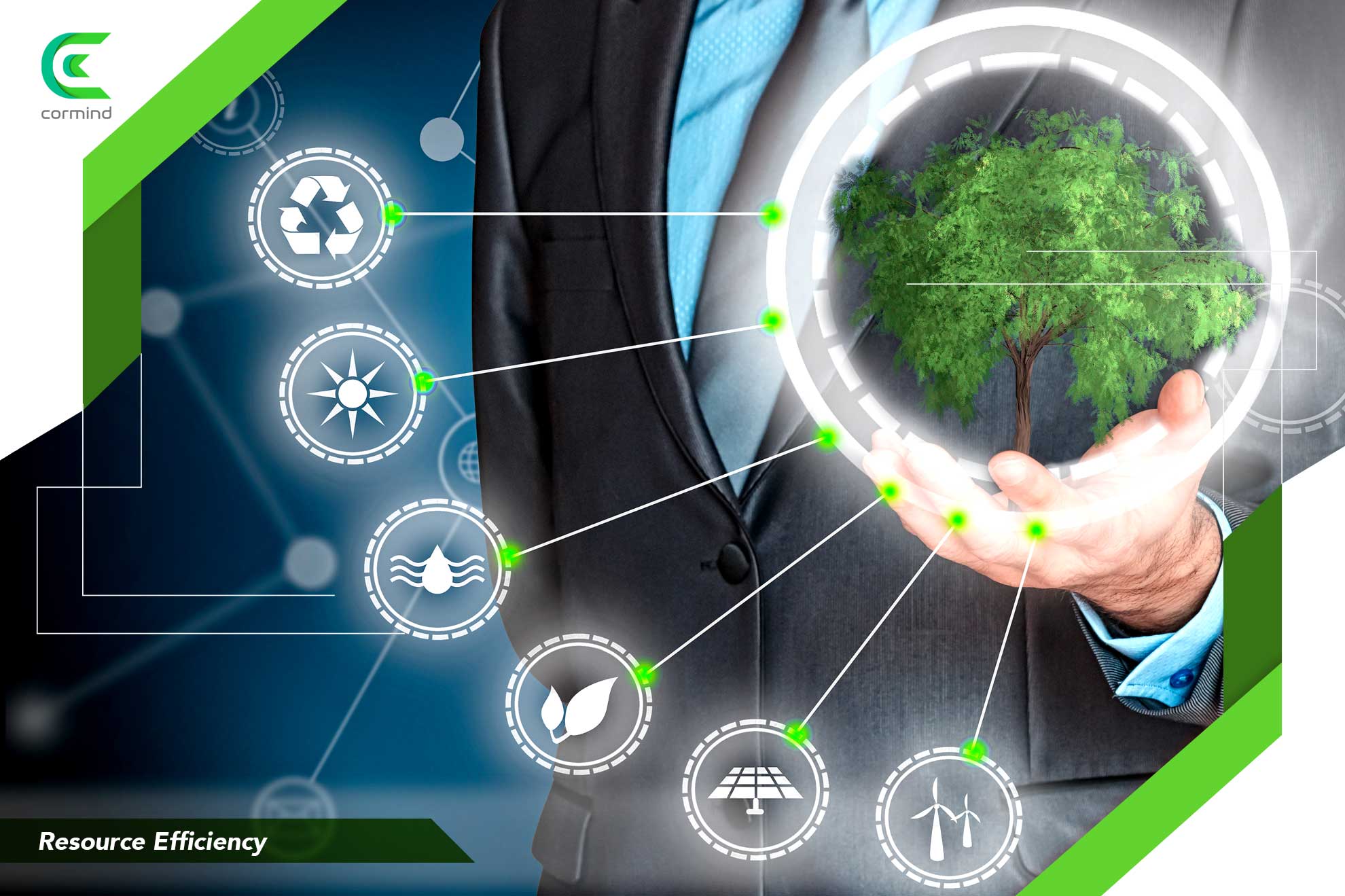
by AlperSarbak | Feb 13, 2023 | Blog
The MTBF concept is a term introduced as the abbreviation mean time between failure. MTBF measurements cover unplanned inspections and maintenance.
Planned maintenance operations are not included in MTBF measurements.
MTBF measurements are important for all sectors operating with equipment that can fail. It is especially beneficial for banks, factories, technology companies, and similar businesses in terms of predicting failures. Therefore, the mean time between failure measurements performed by expert personnel directly contributes to areas such as business planning and production efficiency.
MTBF Formula
The universal formula used to calculate M-T-B-F is called the MTBF formula. You need to determine how many times the determined asset has failed in total and how many hours it has been working to analyze the mean time value between two failures and achieve the result. Later, the number of failures is divided by the operating hours. The resulting value is the M.T.B.F. measurement result.

How to Calculate MTBF?
There are some considerations to pay attention to achieve the most accurate results while calculating MTBF. These considerations can be summarized as follows:
- Parameter Determination for Data Recording: It is necessary to determine the parameters of the data to be recorded to calculate the time between failures. Thus, it is possible to achieve clear results such as elapsed runtime and number of failures.
- Data Recording: Calculating MTBF with asset guidelines often leads to misleading results. It is because these guidelines do not include human factors and business-specific conditions in the calculation. Therefore, businesses need to collect and record their own data to achieve the most accurate results.
- Calculating Operation Time: The total operations hours of the asset are needed to calculate M-T-B-F. Therefore, how many hours the equipment operates should be checked from the records and used in the formula correctly.
- Identifying the Number of Failures: The number of failures is one of the most important data for calculating M.T.B.F. How many times the assets have failed in total within the time should be included in the calculation correctly.
- Applying the Formula: After all, data is identified, the MTBF formula must be filled in properly. It is possible to achieve the mean time value between failures after providing the values corresponding to the parameters specified in the formula.
Thanks to MTBF calculation, it is possible to determine how long it takes for assets to fail. In this way, advantages such as implementing the required solution suggestions and increasing efficiency can be achieved.
M.T.B.F. Improvement Stages
There are three main steps to follow for MTBF improvement stages. These steps can be summarized as follows:
- Structuring the Maintenance and Repair Processes: Knowing how long it takes for assets to fail allows predictive maintenance to be carried out when the time of failure approaches. It becomes possible to take precautions and not disrupt the business plan without experiencing a breakdown with process optimization. In this way, businesses enjoy advantages such as using resources most efficiently and reducing waste costs.
- Performing Failure Analysis: Examining and analyzing the data of failed assets will significantly contribute to developing a solution. Therefore, businesses should determine the frequency and cause of the failure and make the required analyzes. In this way, it is possible to take the necessary precautions and prevent failures.
- Creating an Early Warning System: Analyzing the data of the failed assets based on the situation is an important factor for businesses to create an early warning system. In this way, failed assets can be maintained separately and differently from other assets. Thus, there will be no disruptions or delays in business planning.
Monitoring the improvement stages of the mean repair time between two assets is important for less frequent failures. Therefore, businesses must record all necessary data and implement the necessary actions to calculate the mean time between two failures.

What Is the Difference Between MTBF and MTTR?
The M.T.B.F. concept refers to a metric measure used when business planning is interrupted 2 times in an unplanned manner. The time elapsed between two interruptions provide the MTBF value. On the other hand, the MTTR concept refers to the metric measure, which calculates the time between the unexpected interruption of business planning and the time it takes to become active again. So, the measurements represented by both concepts are completely different from each other.

by AlperSarbak | Jan 17, 2023 | Blog
Kaizen is a philosophy considered the key to success by many businesses today. Businesses, which adopt this philosophy, manage to increase their authority and profits in the market in a short time. Also, they enjoy a significant reduction in the mishaps encountered in the processes from production to delivery and costs. Kaizen is a Japanese business philosophy, and it is a business model adopted by many businesses in our country.
What Is Kaizen?
The word Kaizen describes a philosophy that originated in Japan and spread all over the world in a short time. The word Kai refers to the changing concept. On the other hand, Zen refers to good or better. In this regard, the philosophy can be defined as a business philosophy that means continuous improvement.
Kaizen philosophy presents the opinion that businesses should strengthen their weaknesses and improve their strengths. In this way, it is possible to each business goal and desired levels in a shorter time. Also, the goal in the entire process is to achieve the highest profit rate.
Kaizen Philosophy
Kaizen philosophy is a philosophy that claims that every person can make every situation better. It also adopts the principles of taking every situation to the next level all the time. Kaizen philosophy does not accept perfection and emphasizes that there is always something better. Therefore, it supports working in a disciplined way. Kaizen philosophy implementation aims to make businesses better in a short time and ensure permanent development in the long run. In this way, factory process optimization reaches maximum performance.
Kaizen philosophy supports teamwork, in which all personnel participates, rather than individual actions. Getting the opinions of all personnel allows people to be aware of their own values and to approach their work more constructively. This makes reducing waste and costs while increasing productivity and performance possible.
Kaizen Technique
Kaizen technique is a business model applied for businesses to achieve permanent improvement. It is possible to improve the products as a result of improving quality and increasing efficiency. This technique also covers objectives such as total quality management, automation efforts, provision of group activities, and protection of quality circles.
The correct implementation of this technique ensures that people get the highest and most lasting effects in the shortest time. Therefore, many businesses operating in different sectors around the world adopt the principle of increasing success rates by implementing KAIZENN techniques.

5s and Kaizen
5S and Kai-zen
The 5S rule is an important implementation model of the Kaizen philosophy. This model, which aims to create a clear and orderly work area, also aims to ensure continuity after achieving the targets. In this way, it is possible to prevent losses due to the disruption of clearness, absence of followed standards, or irregularity.
The 5S rule is an abbreviation consisting of the initials of Japanese words. These words and principles can be described as:
- Seiri, meaning sorting,
- Seiton, meaning order,
- Seiso, meaning cleaning,
- Seiketsu, meaning standardization,
- Shitsuke, meaning discipline
The implementation of 5S rules aims to increase service and product quality. Prevention of waste also has an important place within these rules
Kaizen Features
Kaizen features can be listed with 13 items. It is possible to list these basic principles as follows:
- Performing management operations according to value,
- Active participation of all personnel throughout the process,
- Development of skills and abilities of functional teams,
- Ensuring complete focus throughout the business process,
- Completion of processes as soon as possible,
- Adopting an assertive style while setting goals,
- Adopting the principles of productivity as a principle,
- Completely preventing wastage,
- Making quick decisions,
- Preparing full-scale plans in all implementations,
- Preparing training programs for all new processes,
- Making plans in line with the sustainability principle,
- Increasing and improving the workforce.
Kaizen features are the same for all sectors and companies. These features must be considered in the working principle to achieve successful results.
Kaizen Cycle
The Kaizen cycle is basically implemented in 4 different steps. It is possible to describe the steps of this cycle called PICT as follows:
- Plan: It is the process of setting goals and collecting the data necessary to achieve these goals.
- Implement: It means that the plans need to be implemented after they are finalized.
- Control: It is the stage of whether the goals have been achieved as a result of the implementation and the analysis of the problems encountered during the process.
- Take Precautions: It is the stage of taking the necessary precautions and maintaining continuous improvement depending on the control results.
The Kaizen cycle should be repeated in all processes and stages. Therefore, it is considered a cycle in the business process.
Kai-zen Examples in Factories
Implementation of the Kaizen philosophy in factories allows both businesses and personnel to enjoy many advantages. Active participation of personnel in all production processes ensures a direct increase in competitive power in the market.
The most common example of Kaizen philosophy in factories is encouragement. Planning teamwork instead of individual tasks and sharing performance results as incentives can be examples.
Performance results should include details such as a reduction of the team’s workforce, more efficient work results, time savings, and a better-quality working day with less effort from team members. Kobetsu Kaizen means improvement practices performed as a team.

10 steps of kaizen
What Is 10-Step Kaizen?
10-Step Kaizen is a statement that describes the steps needed to implement this philosophy. The 10-step Kaizen stages can be listed as follows:
- Picking the topic of work,
- Determining the targets as a result of the work,
- Determining the appropriate team to achieve the goals,
- Evaluation of the current position to determine the starting point,
- Planning the project with all its details,
- Performing root cause analysis,
- Implementation of necessary solution steps,
- Checking the match of the target and result,
- Standardization of the entire working process,
- Dissemination of the work completed.
10-step Kaizen implementation is very effective for improving performance in a short time. Therefore, it is an ideal plan to start implementing the Kaizen philosophy.
KAIZEN MANAGEMENT
Kaizen management refers to all of the implementations performed to apply Kai-zen techniques correctly and to monitor their sustainability. These management processes aim to inform all personnel about the Kaizen philosophy, provide the necessary support, find appropriate solutions to the problems experienced, and transform their techniques into a permanent business principle. It is very beneficial to receive professional management support, especially for businesses that have just started to adopt this philosophy.
Kaizen Budgeting
Today, Kaizen budgeting is a budget planning preferred by businesses all over the world. Reducing expenses and waste to a minimum within this planning allows for achieving the highest profit. In this way, it is possible to optimize the profit margin. The correct implementation of Kaizen budgeting processes is a very effective method for businesses to achieve the highest profit as soon as possible.
Kai-zen Quality Management
Quality management in Kaizen is a working model implemented with the principle of serving people. This model aims for the participation of all personnel and a steady increase in quality. It is implemented in 3 steps and the stages of this technique are implementation, standardization, and improvement.
Kaizen Suggestion System
Kaizen philosophy gives importance to the participation of all staff. Therefore, the opinions and suggestions of the personnel are important at every stage. You need to build a suggestion system to maintain this fairly and continuously. Also, you need to adopt a management system to perform the received suggestions most accurately.
Kaizen Costing
Kaizen supports that the costs needed in all business processes should be at the lowest level. First, a cost target must be determined in the costing model. Later, the steps required to lower the cost less than this amount should be determined. Kai-zen costing applications always aim to reduce the cost levels to lower amounts. (See also: How to Reduce Production Cost?)
The Best is the Enemy of Good
Kaizen philosophy states that you can never be the best. Therefore, thinking you are the best impedes growth and recovery in Kaizen philosophy. Since decline and recession are inevitable for businesses in these cases, one of the most effective mottos defining the Kaizen philosophy is the “The best is the enemy of good!” phrase.

by AlperSarbak | Jan 2, 2023 | Blog
MTTR is the abbreviation for mean time to repair and it is a metric system of measurement.
The MTTR concept is used to determine the cause of the failure in the equipment and calculate how much time the maintenance department will need to fix these failures. In this way, maintenance department personnel have the opportunity to instantly learn how fast they should react in case of sudden failures.
This is why MTTR measurements are important regardless of the sector.
MTTR values are important for almost every sector, especially factories, railway companies, spare parts sectors, banks, and other technology companies. It is because these measurements allow us to reduce downtime and increase productivity.
MTTR Formula
MTTR measurement is a metric system, which allows the calculation of the time required to reactivate the business plan in case of an unexpected failure. The formula used to calculate this measurement is called the MTTR formula. Measurements are carried out with professional calculations by maintenance personnel, who are experts in their fields. In this way, achieving the most accurate results can be possible.
It is necessary to know the total time spent repairing unplanned failures and determine how many times the failure has occurred to measure the mean time to repair. Later, the number of failures is divided by the total repair time. The result is equal to the time needed to eliminate the failure, i.e., M.T.T.R. value.

Calculate MTTR
How to Calculate MTTR?
First of all, it is necessary for the expert maintenance personnel to record the failure data regularly to calculate the mean time to repair. A factory production monitoring program must be set up to access this data. Later, it is possible to make calculations by using the MTTR formula. The value achieved with the mean time to repair calculation will cover all of the following stages:
- Informing the maintenance department personnel in case of a failure,
- Identifying the problem causing the failure,
- Eliminating the identified failure,
- Reassemble the repaired equipment and confirm that it is in operation,
- Resetting and testing the systems that are in the production phase in case of failure,
- The restart of the systems and the continuation of production after all the checks are done.
Calculation of the mean time to repair is an effective measure to identify the time from the moment the failure occurs to the moment when the systems will start working again. This is why it is a very important metric for production sectors.
What Is the MTTR Target?
Mean time to repair measurement is a metric system that specifies the time to be spared for the elimination of unplanned failures, which leads to interruptions in production. The number of failures must be divided by the total repair time to make the calculation. However, businesses try to avoid failures as much as possible so that their business plans are not interrupted and disrupted, and in case of any failure, they expect these failures are repaired as soon as possible. This is why the MTTR target of the businesses is reaching the lowest possible values.
MTTR Improvement Stages
The mean time to repair concept is an important key performance indicator. Reducing MTTR values means shorter downtime, stable production, happy customers, and reduced maintenance costs. The higher mean time to repair means higher loss.
There are 4 MTTR improvement stages, which are diagnostic, data, repair, and testing. Understanding each stage and making plans to minimize them are some of the most important elements of production efficiency. Therefore, it is important to work with expert personnel at all stages.
What Is the Difference Between MTTR and MTBF
MTTR concept means mean time to repair. On the other hand, MTBF indicated the mean time between failures. The main difference between these two concepts is they are different measurements. Combining MTBF and MTTR calculations provides the runtime. The following formula is used to calculate the runtime with these two metrics:
Runtime = MTBF / (MTBF + MTTR)

by AlperSarbak | Dec 20, 2022 | Blog
Resource efficiency in industry is very important in identifying potential. Energy, water, and raw material savings together with the total resource savings potential allow us to use resource efficiency effectively. It is quite difficult to analyze all these items one by one. Therefore, Production Management System applications are used. Thanks to these systems, we can view all data in one analysis screen and also intervene remotely.
You can call us at +90 216 706 15 18 or send an email to [email protected] for more information.
Scarce Resources and Infinite Human Needs
Human needs are the main cause of everything that has developed in the world. The most important factor in the emergence and development of the industry is also human needs. Human needs are continuous and unlimited. However, there are not enough goods and services to meet these needs. As resources are scarce, new resources cannot be created. Well, how will these unlimited human needs be met with these scarce resources? The Science of Economics has developed to achieve this balance. The purpose of the Science of Economics is not just to meet human needs. It is also concerned with the resources (inputs) that create the goods and services that will meet the needs. Goods and services are outputs. Certain sources, which we call inputs, are used to achieve outputs. The industry is the factory community where inputs are converted into outputs.

Resource Efficiency
Importance of Resource Efficiency
Needs increase rapidly as a result of the rapid increase in the world population, the growth in the economy, and the increase in living standards. However, resources continue to be scarce. Since resources cannot increase, this led to the emergence of resource efficiency. Resource efficiency refers to producing more products by using scarce and exhaustible resources more efficiently. The more efficient use of resources affects the cost and prevents waste. This also means less environmental pollution.
Impact of Resource Efficiency on the Market
Resource efficiency is not only limited to the complete use of inputs. Sometimes, the conversion of heat energy into electrical energy while producing goods and services also means efficient resource usage. The complete use of resources in producing goods and services can also lead to a competitive environment in the market. It is because when the inputs are used completely and not wasted while producing a good, this will reduce the cost of the product and eventually, affect its sales prices. As a result of this, it will lead the factory to supply the goods it produces to the market more affordably and lead the competition.

by AlperSarbak | Dec 10, 2022 | Blog
An innovative production approach has been adopted with the continuous development of production technology. Innovative, efficient, and error-free products have started to appear, especially with industry 4.0. innovation in production has increased with the smart factories that started with the 4th industrial revolution. An innovative production system has been introduced in all sectors.
The 4th industrial revolution or in other words, industry 4.0 and innovation, which is a combination of concepts that are compatible with each other but express different meanings, refers to developments in the field of production technology. The system, which covers a wide concept from internet services to start-up economy, continues to shape the industrial sector all over the world. Since this technology is used all around the world today, it is called the Industry 4.0 Era.
It can be observed that there is a very fast transition to innovation in factories that adopt Industry 4.0.

high efficiency and quality production
High Efficiency & Quality Production
A new era has begun in the industrial sector, i.e., in production environments with industry 4.0, which allows the functionality and seamless collection of data. Industry 4.0 and Innovation, which boost efficiency, also have an important place in developments in the competitive environment. This system consists of 3 basic structures. The infrastructure of this system consists of the devices used in the industry, which interact with each other.
It facilitates the data flow between the Internet of Things and Services and Cyber-physical systems. Communication is ensured between tools and machines thanks to this technology. A quality production process with high efficiency has been achieved thanks to this communication. Industry 4.0 is based on 6 different basic principles so that it can have a strong and autonomous decision system.

industry 40 principles
Industry 4.0 and Basic Principles
Service definition and communication in real-time are greatly emphasized in the innovation application developed for the systems used in the industrial sector to interact with each other.
This system is not only considered a technological development but also proves that the mentality in this sector is gradually changing. One of the most important advantages that the system offers to the user is production can be tracked instantly. Besides, maximum efficiency is aimed at preparing a setting that adapts to modular change.
Another principles of industry 4.0 and innovation systems, which is the latest industry wave, is a decrease in costs during the production process. Although the costs during the implementation of this system seem high, it pays for itself in a very short time. Many existing problems experienced in production until now will be eliminated with this system. There will be uniform products. Raw material waste will be ended. Digitized factories will also have 24/7 production potential. It allows one to start production by pressing a single button remotely. Without the need for a certain task master or muscle power. In summary, after the system setup, the decrease in implementation costs will be noticeable.
The fact that these systems are improvable and adaptable proves the long-term usable nature of these systems. The 4th Industrial Revolution, which is a sustainable practice, can be revised to adapt to the conditions with this feature.

by AlperSarbak | Dec 6, 2022 | Blog
What Is Production Planning?
Production planning is the process of generating a general output level called a production plan. This process also includes other activities required to meet current overall sales levels. Also, as stated in the general business plan of the company, it meets overall goals of profit, efficiency, lead time, and customer satisfaction. The managerial purpose of production planning is to develop an integrated plan, in which the operations department will be the focus of the production plan. In this case, besides linking the strategic goals of the company to its operations (production function), a production plan should coordinate the processes with sales targets, resource availability, and financial budgets.
Besides generating production plans, the production planning process also includes comparing sales requirements with production capacities and including budgets, preparation of financial statements, and support plans for material and labor requirements.
The Main Purpose of Production Planning
The main purpose of production planning is to determine the production rates, which will allow the management to achieve the goal of meeting customer demand. Employment satisfaction can be achieved by maintaining, increasing, or reducing inventories or backlogs while keeping the workforce relatively stable. If a company implemented the right philosophy in time, it will use a follow-up strategy, which means satisfying customer demand, while keeping its inventories at a minimum. Since the plan affects many company functions, it is naturally prepared with data from marketing and coordinated with manufacturing, engineering, finance, materials, etc. functions. Recently, another concept, sales planning, and process planning have been used to more accurately express the concern about coordinating various critical activities within the company.
Production planning sets key objectives for working in each of the main functions. It should focus on the best sales and marketing objectives, cost of manufacture, planning, error-free inventory objectives, and financial objectives for the firm as a whole. All these should be integrated with a strategic view of where the company wants to expand its operations to. The production planning process typically begins with an updated sales projection covering between 6 to 18 months. Any desired increase or decrease in inventory or backlog levels can be included or removed from the production schedule. However, the production plan is not a demand projection. It plans the production on a total basis. An effective production planning process often uses open timesheets as it is not known when the overall plan can be changed (increased or decreased). Also, there may be restrictions on the degree of change (amount of increase or decrease).
Production planning also provides direct communication and consistent dialogue between the operations function and top management, as well as between operations and other functions of the company. Therefore, the production plan should be stated in definitions that make sense to everyone within the company but not just the business manager. Since production planning has a significant role in production, this process can be responsible for a company’s success or failure in these key areas of responsibility. Production planning also helps organizations examine how sales and distribution and materials management are carried out. Improving these areas has a positive outcome in all departments of a company.
As a result, production planning has a direct influence on finance. Also, since planning can monitor how organizations reach their customers and make sure that the optimal number of staff is available for the different processes, it is related to other fields such as quality management and human resources.

production planning
Production Planning and Projected Demand
You need to research how much product you need to produce in a given time frame and achieve a rate with a 10% fire rate. This includes both confirmed orders and projected orders. There are different methods used for projection. Product demand projection can be determined based on historical data (orders placed by customers in the past) or you can consider events that may change past patterns in your business environment (new market trends, a stagnant economy, new marketing campaigns, etc.).
Determining Production Options
Investigate different production options to meet anticipated demand. Start by mapping all the steps of your production process by using tools such as flowcharts. This will help you examine how to improve the process flow by considering challenges.
Later, identify the resources you need to complete each task involved in your production process. This should include the combination of resources such as human resources, machinery, equipment, materials, and inventory. Analyzing these resources will provide you with a better view of your production options.
Using Resources Most Effectively
A comparison of the production cost and production time of each production option should be carried out and the most accurate steps should be taken to maximize the company’s operating capacity. You need to make sure that you can afford the associated costs, which include purchasing supplies, office rent, paying salaries, leasing, and more. You need to share the production plan with the departments and personnel related to the process and make the processes more seamless by predicting which materials and equipment will be needed for the tasks in the production process.
Monitoring and Control: The plan must be compared with the possible scenarios to ensure that it will work as intended. When this control system is established, it will help you to identify the problems and provide you more time to develop solutions to them.
Revision / Adjustment: Get ready to revise or adjust the plan if necessary. A company must have some financial flexibility to meet changes in customer demand. This plan should also include a risk reduction plan, which covers if certain risks arise in the production process, such as machine failure, employees getting sick, or suppliers not delivering on time.

















